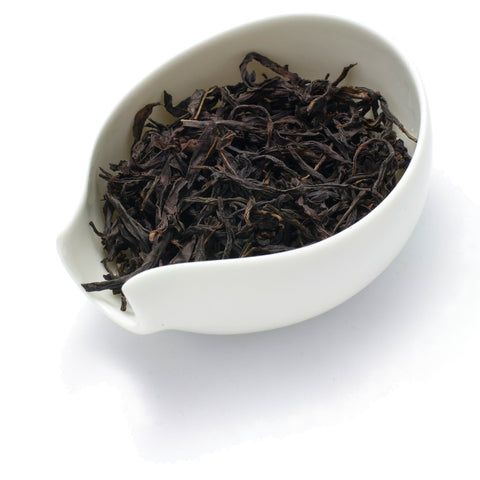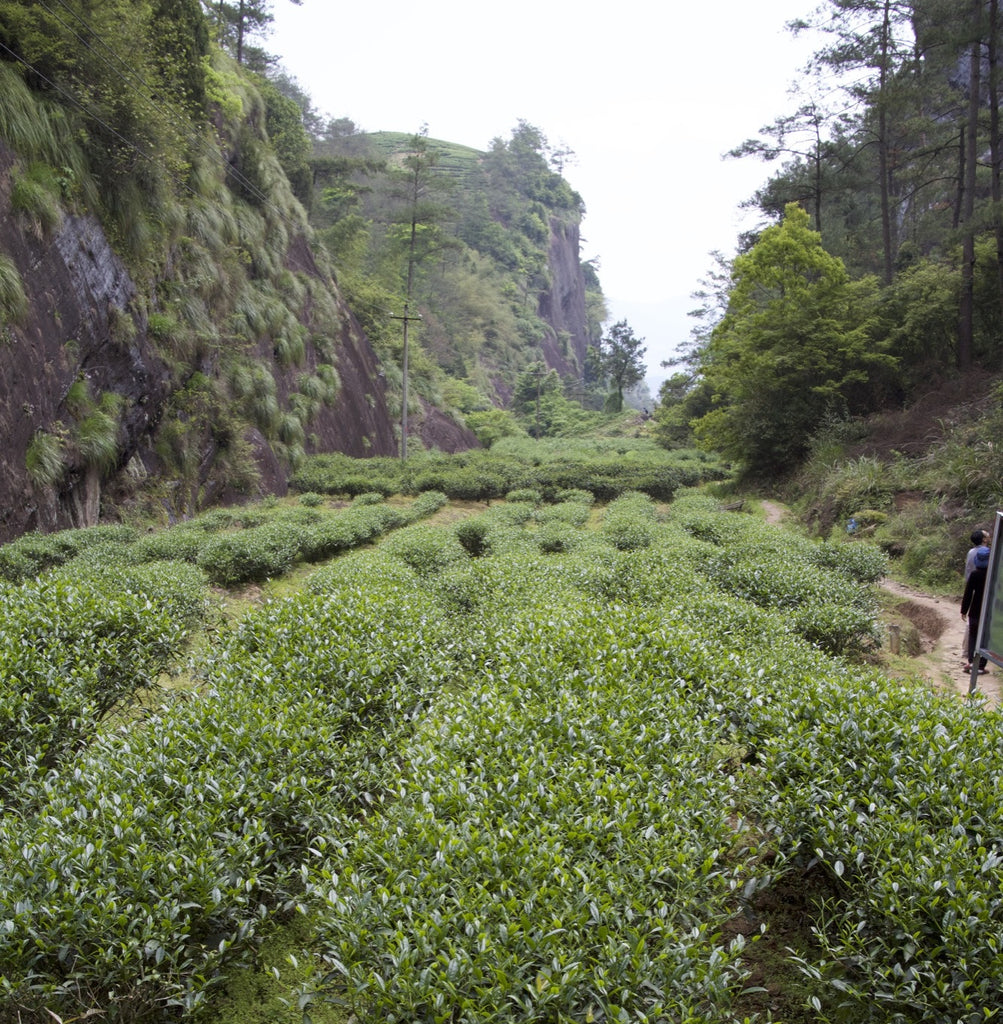Oolong Tea
Whether passionate tea drinker or not: almost everybody has come across green, black and maybe even white tea at some point. Oolong teas, however, often seem like quite a mystery to the unacquainted palate, or as some sort of reference point dividing the expert from the amateur. Which is why many people tend to shy away from oolong teas, missing out on whole new worlds of flavours and aromas that are so unique to oolong tea.
Who’s afraid of oolong tea?
Oolong tea is partially oxidised tea. The level of oxidation - as well as the variety of the tea plant and the degree of roasting, if roasted at all - determines the unique flavour and colour of each oolong tea. In order to produce such unique characters the processing and the oxidation of the tea leaves are crucial and require highly developed skills by the tea producer.
"The level of oxidation, the variety of tea plant and the degree of roasting determine the unique flavour and colour of each oolong tea."
With oxidation levels ranging from 12 to 80 percent the colour of the tea leaves can vary from green to dark brown. The flavours vary just as strongly: green oolongs tend to be light, fresh and soft while darker oolongs are rather rich and full-bodied in taste. Thus, “oolong tea” may sound like a neat category but actually describes an immensely diverse group of teas.


The production of oolong tea
Some say that oolong tea is the most complex tea to produce: depending on what style of oolong is desired, the leaves must be processed accordingly! The crucial part of oolong production is the oxidation. The leaves are gently and repeatedly bruised to promote and control the oxidation process. When the desired level of oxidation is reached, the leaves are then heated in order to stop the oxidation process, and dried. Some oolongs are roasted after drying to add additional flavour to the tea and to deepen the aroma.
"The crucial part of oolong production is the oxidation. The leaves are gently bruised to promote the oxidation process."

Fifty shades of oolong tea
Finding the right oolong tea can be tricky since there are so many types and flavours to choose from! Mostly, you will find two origins of oolong tea: China and Taiwan.
CHINA
Fujian - Wuyi Mountains
China is the original birthplace of oolong tea. The province of Fujian is especially known because they produce absolutely exceptional oolongs. A very popular type of oolong from Fujian is Wuyi Yan Cha, which stands for rock or cliff tea, i.e. tea from the Wuyi Mountains. The Wuyi Mountains comprise a breathtaking landscape of rivers, bamboo forests and mountains of limestone. Thus, the tea plants grow in thin soil which is very rich in minerals. This terroir and soil make oolong teas from the Wuyi area so extraordinary!

Wuyishan landscape with narrow valleys and giant, dark cliffs.
Da Hong Pao: This oolong mirrors its terroir perfectly: during the production process the leaves are baked over wood ashes to retain a slight char aroma, which is typical for Wuyi rock tea. While the dry leaves smell a bit of honey, dry wood and - of course - of char, warm floral notes and sweet plum emerge once the tea is steeped. Topped with a bright and mineral mouthfeel, this Da Hong Pao is a rich, mouth-watering oolong which takes you back to its sensational and wild origin.
Huang Mei Gui: Huang Mei Gui means ‘yellow rose’ and carries this name for a good reason: This light oolong meets the palate with a strong floral fragrance; orchids, lilies and orange blossoms come to mind with every single sip. This light and aromatic oolong will show you what spring can be like in the mountains!
Fujian - Anxi
Tieguanyin: One of the most famous of Chinese oolong teas is Tie Guan Yin. This tea hails from the area around Anxi in the province of Fujian. The soil in this area is very fertile and rich in iron oxide, which gives it a rather reddish than brown colour. That is probably the reason why the tea is called Tie Guan Yin or ‘Iron Goddess of Mercy’. Traditionally, Tieguanyin is roasted but nowadays the green, unroasted version is more popular. Roasted Tieguanyin displays warm notes of baked bread with butter, which is deliciously relaxing. Unroasted Tieguanyin is more floral and sometimes a little sour.

Landscape in Anxi (South of Fujian) where Tieguanyin is cultivated.
TAIWAN
Taiwanese oolongs, too, can be traced back to Chinese oolongs: immigrants from China brought tea plants and their skills in tea production to Taiwan around the mid-nineteenth century. Due to Taiwan's unique terroir and its own way of manufacturing tea, however, Taiwanese oolongs have become their own group of Oolongs - and very revered too!
Dong Ding: This oolong seems to combine all the flavours that are so appreciated in Taiwanese oolong: warm notes of roasted grain and honey combined with the subtle hints of flowers in late summer will make you dream of the melancholy of summer passed. The rich, sweet and buttery mouthfeel is deliciously relaxing and cosy and will stay in your mouth long after you have enjoyed the last sip.
Ali Shan: Taiwan, too, can produce High Mountain teas: Ali Shan, Li Shan and Shan Lin Xi are the three highest tea gardens in central Taiwan. Our Ali Shan is a warm and rich tea combining light floral notes with the tantalising, deep aromas of dried ripe fruits. Together with a lingering, honey-like sweetness, Ali Shan has an immensely intriguing and satisfying flavour profile.
High mountain tea garden on Lishan mountain (Taiwan).
Jin Xuan: Some oolongs like our Jin Xuan have an attribute that never ceases to astound me: a unique milky consistency. For this reason, these kinds of teas are known as ‘milky oolongs’. Jin Xuan is slightly floral, soft and sweet in taste, which is even intensified by this absolutely creamy-milky mouthfeel. Mouth-watering deliciousness!
Written by Birgit


